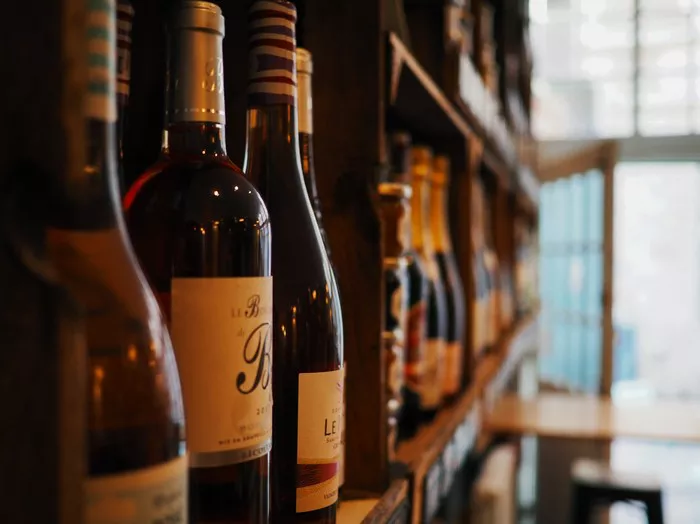Champagne, with its effervescent bubbles and celebratory charm, is often associated with special occasions. But what happens when you pop the cork and can’t finish the bottle? How long can you savor those delightful bubbles after opening? In this guide, we’ll unravel the secrets to keeping your champagne fresh and sparkling, even after it’s been opened.
1. Re-Seal with Care:
After the initial pop, immediately re-seal the champagne bottle with its original cork or a specialized champagne stopper. Ensure it fits snugly to minimize the wine’s exposure to air.
2. Refrigerate Promptly:
Champagne is best stored in the refrigerator once opened. Cold temperatures slow down the oxidation process that can diminish the wine’s flavor.
3. Use a Champagne Stopper:
If you don’t have the original cork, invest in a champagne stopper designed to maintain the bottle’s seal. This will help preserve the carbonation.
4. Avoid Shaking:
Handle the opened bottle gently, and avoid shaking it. Agitating the champagne can release excess carbon dioxide, causing it to go flat more quickly.
5. Consume Promptly:
While champagne can retain its fizz for a day or two if properly sealed, it’s best to enjoy it within 24 hours for optimal freshness.
6. Store Upright:
Keep the opened bottle upright in the refrigerator. Storing it on its side may cause the cork to dry out and lose its seal.
7. Consider Wine Preservers:
If you’re a serious champagne enthusiast, consider investing in a wine preservation system that uses inert gases to protect the wine from oxidation.
8. Note the Champagne Type:
The duration champagne remains effervescent can vary depending on its style. Non-vintage champagne may lose its fizz more quickly than vintage varieties.
9. Taste Before Discarding:
Before assuming your opened champagne has lost its sparkle, give it a taste. It might still be enjoyable, even if the bubbles have subsided.
10. Embrace Champagne Cocktails:
If you find your opened champagne is losing its effervescence, consider using it for champagne cocktails like mimosas or Bellinis, where the bubbles play a less central role.
Conclusion:
Champagne, the drink of celebration and luxury, can be preserved and enjoyed even after the cork has been popped. By following these tips, you can extend the lifespan of your opened bottle, ensuring that each glass is as delightful as the first.
FAQs About Champagne Storage:
1. How long can I keep an opened bottle of champagne in the refrigerator?
An opened bottle of champagne can typically be kept in the refrigerator for 1 to 3 days while retaining its carbonation and flavor. However, it’s best to consume it within 24 hours for the freshest experience.
2. Can I use a regular wine stopper for an opened champagne bottle?
While a regular wine stopper can help slow down oxidation, it may not create an airtight seal due to the unique shape of champagne bottles. It’s recommended to use a specialized champagne stopper to preserve the bubbles effectively.
3. Does the type of champagne affect how long it stays bubbly after opening?
Yes, the type of champagne matters. Non-vintage champagnes, which are blended from different years, tend to lose their effervescence more quickly compared to vintage champagnes. Vintage champagnes often have more structure and may retain their bubbles for a longer time.
4. What are some signs that my opened champagne has gone bad?
Signs that your opened champagne may have gone bad include a flat or dull taste, a vinegar-like aroma, or the presence of bubbles that dissipate rapidly upon pouring.
5. Can I freeze leftover champagne to extend its shelf life?
Freezing champagne is not recommended. The carbon dioxide in the wine can expand when frozen, causing the bottle to break or the cork to pop out. This can result in a mess and potential loss of wine.
6. Are there any alternative uses for leftover champagne besides drinking it?
Absolutely! Leftover champagne can be used in cooking and cocktail recipes. You can use it to make champagne vinaigrette for salads or incorporate it into various cocktails like mimosas, French 75s, or champagne sangria.
7. What is the ideal serving temperature for champagne?
Champagne is best served chilled, typically between 45°F (7°C) and 55°F (13°C). Serving it too cold can mask its flavors, while serving it too warm can cause it to lose its effervescence more quickly.
8. Can I store an opened bottle of champagne at room temperature?
It’s not recommended to store an opened bottle of champagne at room temperature for an extended period. Room temperature storage can cause the wine to deteriorate more rapidly.
9. How can I prevent the cork from drying out when storing an opened bottle upright?
To prevent the cork from drying out, you can moisten it slightly before reinserting it into the bottle. This helps maintain a better seal.
10. What should I do if I accidentally left an opened bottle of champagne out overnight?
If you’ve left an opened bottle of champagne out overnight, it’s likely lost most of its carbonation. You can still use it for cooking or cocktail purposes, but it may not be suitable for drinking as a sparkling wine.


